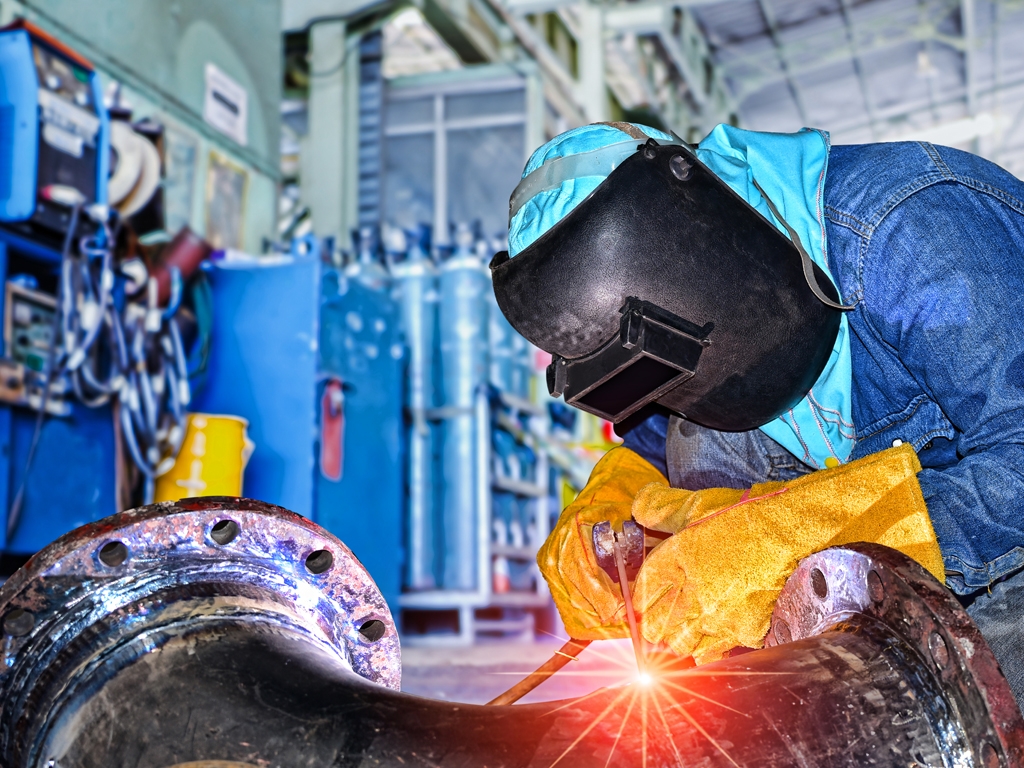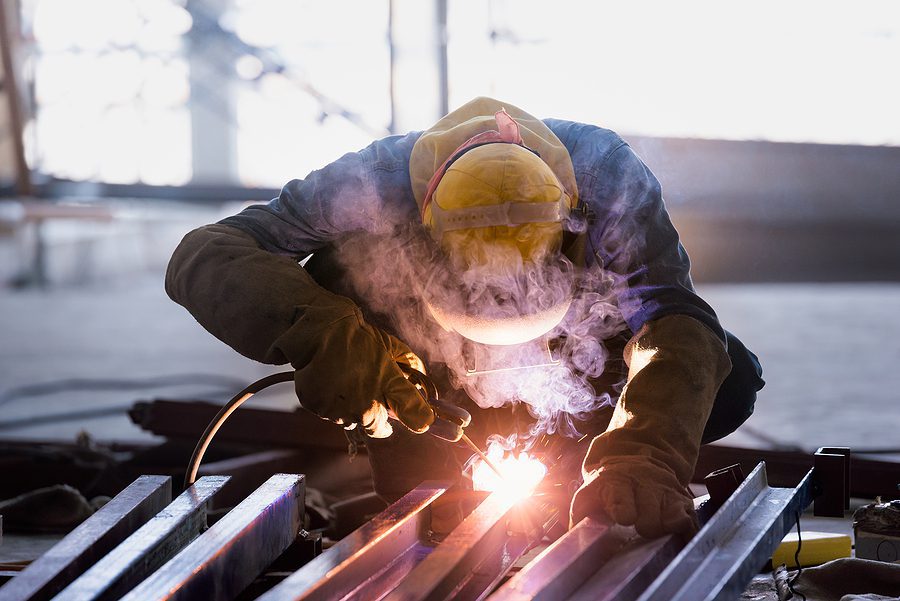Typical Welding Repair Service Issues and How to Address Them Effectively
Welding repairs often come across a range of concerns that can threaten the stability of the last product. Usual issues consist of insufficient penetration, porosity, and misalignment, among others. Each problem provides one-of-a-kind difficulties that call for particular approaches for resolution. Recognizing these concerns is vital for welders intending to improve their skills and results. This conversation will certainly check out these usual welding repair service problems and effective techniques to resolve them.
Poor Penetration
Insufficient infiltration occurs when the weld steel fails to totally fuse with the base product, leading to weak joints and prospective architectural failings. This concern typically stems from insufficient warm input, wrong electrode angle, or inappropriate welding speed. Welders may run into inadequate infiltration due to a mistake of the needed criteria for a specific material thickness or kind. Additionally, contamination on the base product's surface area can prevent effective bonding, aggravating the issue. To deal with insufficient infiltration, welders ought to assure appropriate settings on their devices and keep a clean job surface area. Normal inspection of welds is suggested to recognize any kind of shortages early, allowing for timely modifications and the prevention of compromised structural integrity in bonded settings up.
Porosity
Porosity is an usual flaw in welded joints that shows up as small gas bubbles trapped within the weld metal. This defect can compromise the stability of the weld, resulting in minimized stamina and prospective failing under stress. Montana Mobile Welding and Repair. Porosity usually emerges from contamination, wetness, or improper welding methods, which permit gases to escape into the liquified weld swimming pool. To attend to porosity, welders should guarantee proper surface prep work, maintain a tidy workplace, and make use of suitable welding parameters. Furthermore, selecting the appropriate filler material and protecting gas can alleviate gas entrapment. Routine examination and screening of welds can assist recognize porosity early, ensuring timely corrective activities are taken, thus maintaining the top quality and reliability of the welded structure
Imbalance
Misalignment in welding can develop from different variables, including improper arrangement and thermal expansion. Understanding the origin is necessary for efficient resolution. A number of adjustment techniques are offered to straighten elements and assure architectural stability.
Root causes of Imbalance
Welding misalignment usually originates from a variety of underlying concerns that can jeopardize architectural honesty. One key cause is inappropriate fit-up of elements before welding, which can lead to gaps and uneven surfaces. Variants in thermal growth throughout the welding process can additionally cause distortion, specifically if the materials being signed up with have various coefficients of expansion. Additionally, inadequate clamping and fixturing might stop working to hold parts safely in area, leading to movement throughout welding. Improperly conserved equipment, consisting of welding equipments and tools, may introduce inconsistencies in the weld grain, more adding to misalignment. Ultimately, operator mistake, coming from not enough training or experience, can likewise play a substantial function in producing misaligned welds.
Modification Strategies Offered
Dealing with imbalance properly needs a combination of restorative methods customized to the particular problems available. One usual method is the usage of jigs or fixtures to hold parts in the proper position during welding, making sure constant alignment. Furthermore, pre-heating the materials can help in reducing distortion and enhance fit-up. For substantial misalignment, mechanical adjustment methods, such as making use of hydraulic jacks or clamps, can be used to deal with the position before welding. Post-weld warm treatment might additionally be needed to soothe tensions created by imbalance. Finally, careful evaluation and modification during the setup phase can protect against imbalance concerns from ending up being substantial troubles, promoting a smoother welding procedure and enhancing overall architectural honesty.
Distortion
Distortion is an usual challenge in welding that can arise from numerous variables, consisting of unequal home heating and cooling. Comprehending the reasons for distortion is crucial for carrying out reliable avoidance strategies. Addressing this issue not just improves architectural integrity but additionally boosts the total quality of the weld.
Root causes of Distortion
When based on the extreme warm of welding, materials often undertake modifications that can result in distortion. This sensation primarily occurs from thermal growth and contraction throughout the welding procedure. As the weld area warms up, the material expands; upon air conditioning, it contracts, which can create inner anxieties. Additionally, unequal home heating across a work surface can worsen these anxieties, leading to warping or flexing. The kind of product also plays a substantial function; metals with differing thermal conductivity and coefficients of development might react in a different way, leading to unpredictable distortions. Additionally, poor joint style and reliable welding inadequate fixturing can contribute to imbalance during welding, enhancing the chance of distortion. Understanding these reasons is important for effective welding fixing and avoidance techniques.
Prevention Techniques
Effective avoidance methods for distortion during welding focus on controlling warmth input and guaranteeing appropriate joint design. Preserving a consistent warmth input aids to decrease thermal development and tightening, which can lead to distortion. Making use of techniques such as preheating the workpiece can likewise minimize the temperature level slope, advertising consistent home heating. Additionally, picking appropriate navigate to this site joint layouts, such as T-joints or lap joints, can enhance stability and reduce stress and anxiety focus. Executing proper fixturing to protect the work surfaces in location further aids in maintaining positioning during the welding process. Staggered welding series can distribute warmth more uniformly, avoiding localized distortion. By applying these strategies, welders can substantially reduce the probability of distortion and enhance the total high quality of their welds.
Splitting
Cracking is a common concern run into in welding repairs, frequently resulting from different factors such as inappropriate cooling rates, product choice, or inadequate joint preparation. The incident of cracks can greatly compromise the stability of the weld, leading to potential failings during procedure. To address this concern, welders have to first evaluate the root causes, making certain that materials work and suitably picked for the certain application. Furthermore, managing the air conditioning rate during the welding procedure is essential; fast air conditioning can induce tension and cause fracturing. Correct joint design and preparation additionally add to reducing the danger. Applying these methods can boost weld quality and toughness, inevitably decreasing the chance of breaking in finished weldments.

Insufficient Blend
A considerable concern in welding repairs is incomplete fusion, which happens when the weld steel does not adequately bond with the base material or previous weld passes - Montana Mobile Welding and Repair Belgrade. This defect can cause weak points in the joint, possibly compromising the integrity of the bonded structure. Factors adding to insufficient blend consist of insufficient heat input, improper welding technique, and contamination of the surface areas being joined. To address this issue effectively, welders must ensure appropriate pre-weld cleaning and surface area prep work, as well as change their welding parameters to attain adequate penetration and combination. Routine assessment during the welding procedure can likewise aid recognize insufficient fusion early, permitting timely corrective procedures to boost the general top quality of the weld
Overheating
While welding repair work can enhance structural stability, overheating presents a substantial obstacle that can bring about material degradation. Extreme heat throughout welding can change the mechanical residential or commercial properties of metals, leading to reduced stamina, enhanced brittleness, and bending. This sensation is specifically vital in high-stress applications where architectural my site integrity is vital. Determining overheating can involve aesthetic examinations for discoloration or distortion, in addition to keeping an eye on temperature during the welding process. To alleviate the threats related to getting too hot, welders must employ ideal strategies, such as managing warmth input, adjusting traveling speed, and making use of appropriate filler products. Additionally, applying pre- and post-weld warm therapies can assist restore product homes and improve the overall high quality of the repair, making certain long-term performance and safety and security.
Often Asked Concerns
What Are the Common Indicators of a Welding Flaw?

Exactly How Can I Check My Welds for High quality?
To examine welds for quality, one can make use of aesthetic evaluations, ultrasonic testing, and radiographic techniques. Each technique ensures structural integrity, recognizes problems, and confirms adherence to defined standards, inevitably boosting the dependability of the bonded joints.
What Security Precautions Should I Take While Welding?
When welding, one should focus on safety and security by using suitable individual safety equipment, guaranteeing proper ventilation, securing combustible materials away, maintaining a tidy office, and being conscious of surroundings to stop injuries and accidents.
Can I Fix a Weld Without Redoing the Entire Joint?
Fixing a weld without redesigning the entire joint is feasible, depending upon the damages (Montana Mobile Welding and Repair Belgrade Fabrication). Strategies such as grinding, including filler product, or utilizing a welding process can properly deal with specific problems while preserving the bordering framework
What Devices Are Vital for Reliable Welding Services?
Vital devices for effective welding fixings include a welding equipment, cord brush, mill, safety equipment, clamps, and filler products. Each tool plays a crucial duty in making sure top quality and safety throughout the repair process. Porosity commonly occurs from contamination, dampness, or improper welding methods, which enable gases to run away into the molten weld swimming pool. Improperly conserved equipment, including welding makers and devices, might present inconsistencies in the weld bead, further adding to imbalance. When subjected to the extreme heat of welding, materials frequently undertake adjustments that can lead to distortion. Fracturing is a typical issue come across in welding repair work, commonly resulting from various elements such as inappropriate air conditioning rates, material choice, or poor joint preparation. A substantial concern in welding repair services is insufficient blend, which takes place when the weld steel does not effectively bond with the base product or previous weld passes.